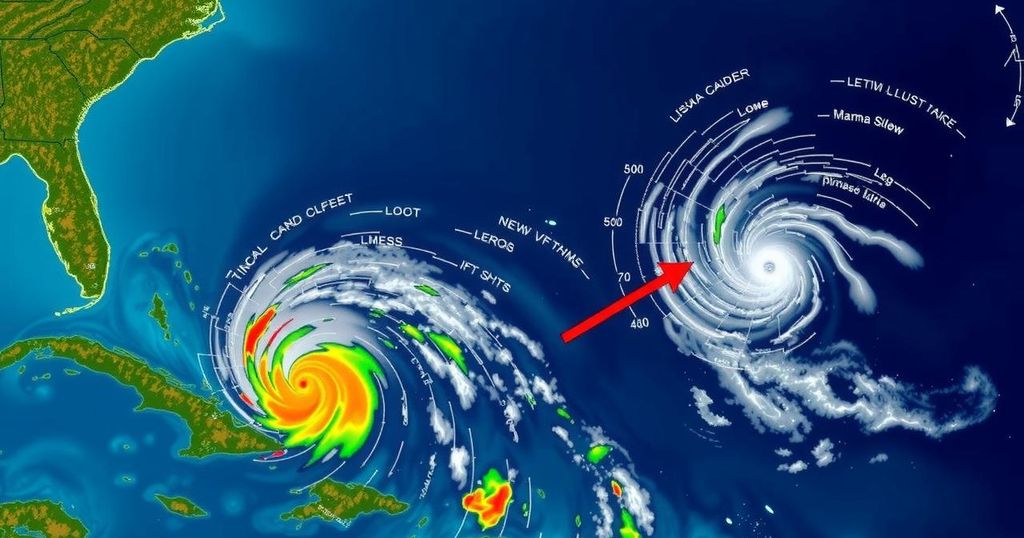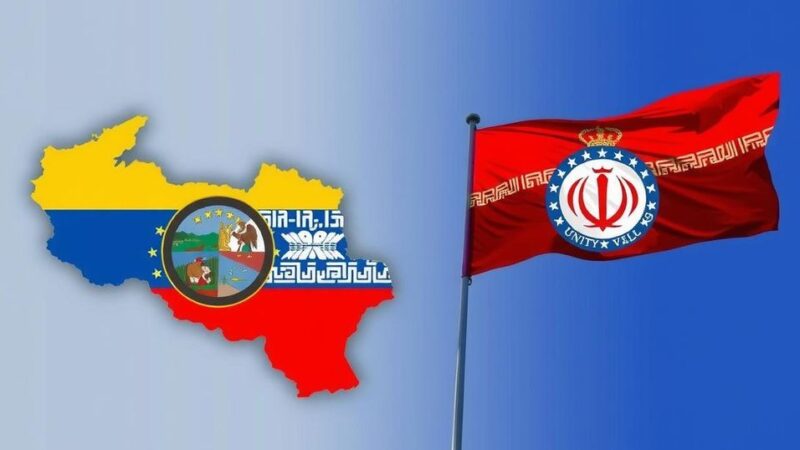Hurricane Oscar rapidly intensified from a tropical wave to a Category 1 hurricane over the course of a weekend, surprising meteorologists who relied on computer models that failed to predict its development. Despite the initial underestimation, human experts and reconnaissance flights successfully identified the storm’s potential and issued warnings in time for affected regions to prepare.
On Friday evening, a disorganized tropical wave was situated east of Puerto Rico, possessing only a 10% probability of intensifying over the weekend. However, by Saturday noon, it transformed into a Category 1 hurricane poised to strike the Bahamas. Experts indicate that this minor storm evaded the scrutiny of prominent storm prediction models, yet diligent human observers monitoring the incoming data – along with reconnaissance pilots and researchers actively collecting information – managed to raise the alarm prior to Hurricane Oscar’s landfall. Philippe Papin, the forecaster for the National Hurricane Center, noted the initial signs of concern while analyzing passive microwave imagery. This satellite technology provides valuable insights into atmospheric conditions beneath cloud cover. Papin observed a developing low-level circulation indicative of a tropical storm, stating, “It became pretty clear that a small circulation was developing. We had to shift gear in a short period of time.” By 11 a.m., the National Hurricane Center issued its inaugural forecast for what was then designated as Tropical Storm Oscar, outlining a projected path directed toward the Bahamas and Cuba. Consequently, the Bahamas initiated a tropical storm warning. Simultaneously, a hastily organized crew of Hurricane Hunters departed from St. Croix to gather essential data. Upon closer examination, the reconnaissance flights revealed a markedly different system than suspected a few days prior, with winds registering as tropical-storm-force only upon approaching the storm’s center. Within hours, Tropical Storm Oscar escalated to Hurricane Oscar, classified among the smaller hurricanes documented in the Caribbean, thereby providing nearby islands with a mere 12 to 24 hours to brace for impact—a significantly reduced timeframe compared to the typical 48-hour lead time for a watch issuance. Oscar made landfall on Great Inagua Island in the Bahamas on Sunday morning, then proceeded to impact the eastern coast of Cuba later in the day. Initially tracking off the coast of Africa over a week prior, computer models had anticipated some degree of tropical development. However, a surge of dry air hindered its potential, leading models to underestimate the system’s viability. By Friday, no significant models indicated a potential tropical storm formation in the Caribbean or Atlantic for the following week. Observations on Saturday revealed a drastic change in the situation. Phil Klotzbach, a senior scientist at Colorado State University, commented on the challenges faced by these models, stating, “I think the models just had a hard time resolving the circulation before they got the recon in there. It’s not like the models didn’t have signals; they had them, and then it killed them off.” Subsequent data from reconnaissance flights was integrated into moving models, allowing them to adjust their predictions. Papin articulated that the storm’s size played a crucial role in the models’ initial misjudgment. Although classified as a small storm—falling short of previous record-holders which had smaller radii—Oscar demonstrated unique difficulties in forecasting. Klotzbach reiterated the complexity of small storm predictions, remarking, “Even though it’s low, they always had a 10% chance. You just never know. It’s a tough forecast. These small storms are tricky.”
The article discusses the rapid development and forecast challenges associated with Hurricane Oscar, which unexpectedly intensified from a disorganized tropical wave into a Category 1 hurricane within a short timeframe. It highlights the limitations of computer models in predicting such occurrences and emphasizes the importance of human expertise and real-time data collection in hurricane forecasting. The content aims to educate readers on the factors influencing storm developments and the complexities faced by meteorologists in forecasting unexpected weather events.
Hurricane Oscar’s swift transformation from a tropical wave to a Category 1 hurricane underscores the challenges associated with storm forecasting. While computer models initially failed to predict this development, human observers and reconnaissance flights played a pivotal role in identifying the system’s potential and issuing timely warnings. This incident exemplifies the complexities inherent in forecasting small storm systems, highlighting the necessity for continued improvements in meteorological science and model accuracy. As professionals contend with such unpredictable phenomena, understanding the limitations of existing models is critical to enhancing preparedness and response strategies for severe weather events.
Original Source: www.tampabay.com






